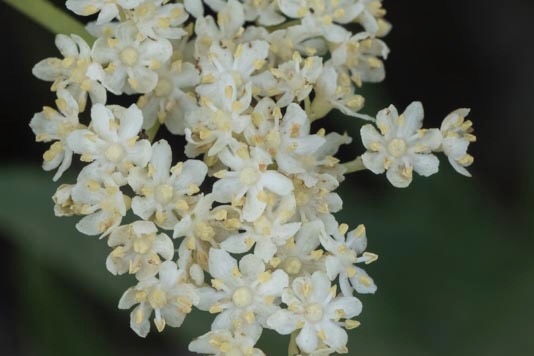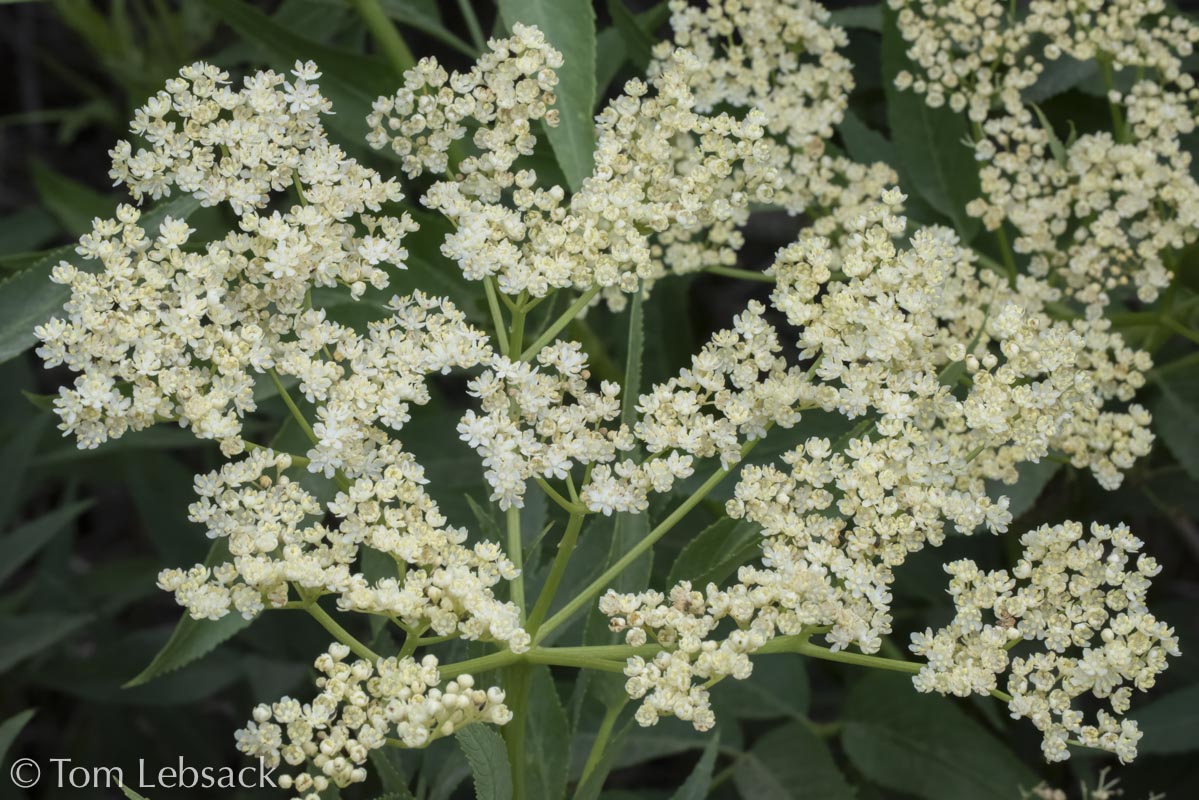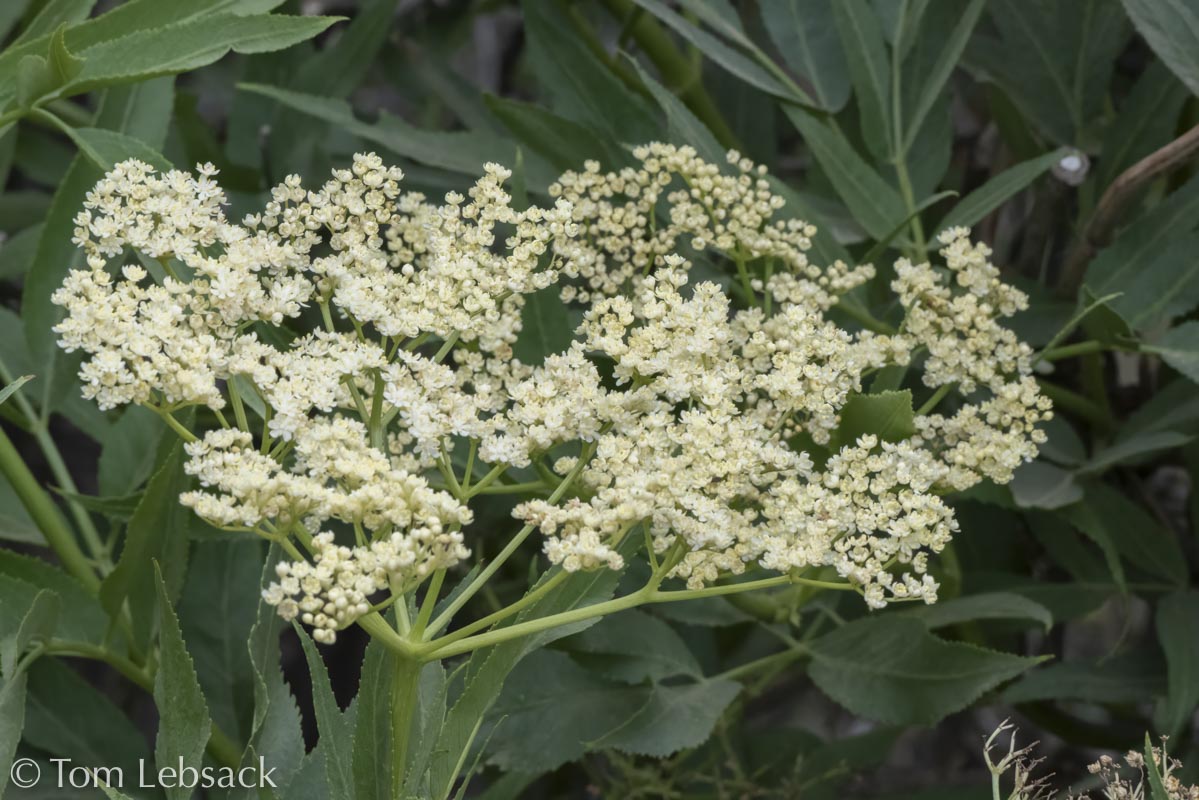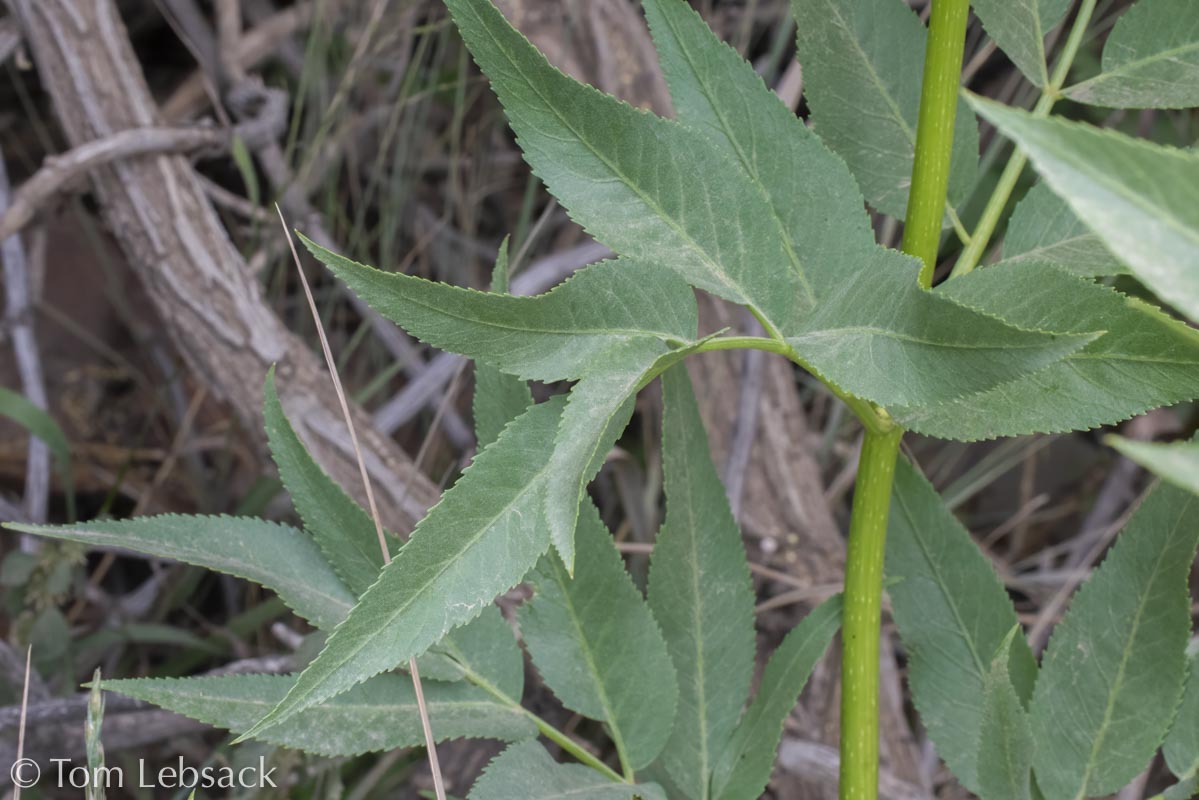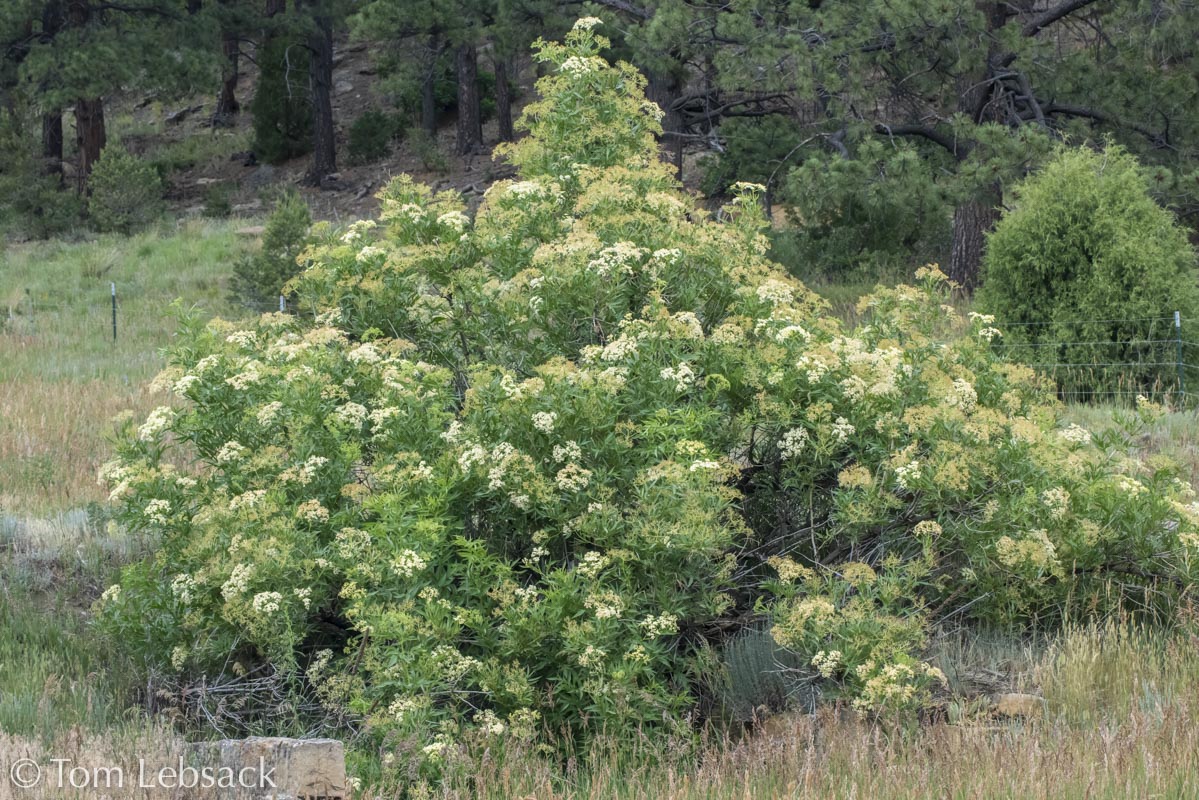(Blue Elderberry)
| Scientific Name | Sambucus nigra ssp. cerulea (Sambucus cerulea) | USDA PLANTS Symbol | SANIC5 |
| Common Name | Blue Elderberry | ITIS Taxonomic Serial No. | 525080 |
| Family | Adoxaceae (Muskroot), formerly Caprifoliaceae | SEINet Reference |
Click Here |
| Description |
Life zones and habitat: Plains to montane (4500 to 9000 ft.); moist soils along streamsides, in woodland openings and moist areas within drier, more open areas. Plant: Shrub 6-1/2 to 13 ft. tall with several stems; gray or brown, furrowed bark; stout, angled twigs. Leaves: Deciduous, opposite, pinnately-compound leaves with 5 to 9 leaflets, each 1-1/4 to 5 inches long, lanceolate to elliptic with serrate edges; smooth, green upper surfaces, pale green, smooth or pubescent lower surfaces. Inflorescence: White or cream-colored flowers in a nearly flat-topped compound cyme at tops of stems 2 to 6 inches wide; each blossom 1/8 to 1/4-inch across with 5 petals and stamens; anthers are yellowish. Bloom Period: May to August. Fruit: Clusters of juicy berries, 1/4-inch or less in diameter, bluish-black or purplish-black with whitish coating. References: S. cerulea in "Flora of Colorado" by Jennifer Ackerfield and Burke Herbarium; S. nigra ssp. cerulea in US Forest Service and SEINet |
BONAP Distribution Map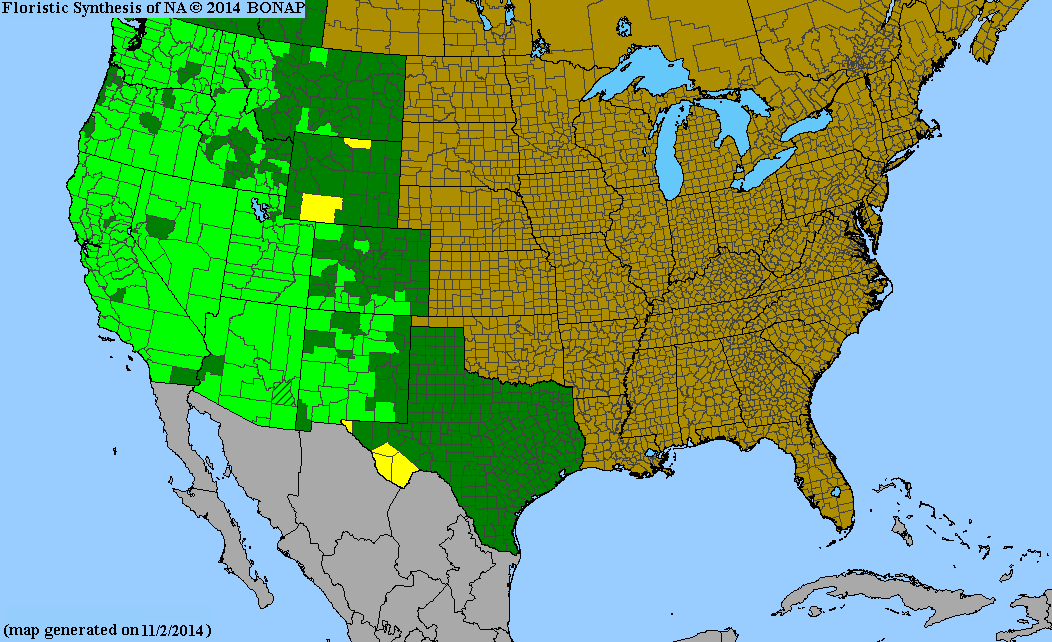 Sambucus nigra ssp. caerulea Map Color Key |
Colorado Status: Native |
© Tom Lebsack 2025
Banner photo: Castilleja rhexifolia and a brewing storm over the San Juan Mountains
I try to provide accurate, up-to-date, and relevant information, but cannot guarantee the completeness or accuracy of any information presented on this website. I use authoritative references to insure high standards of accuracy and review and update the information frequently.
